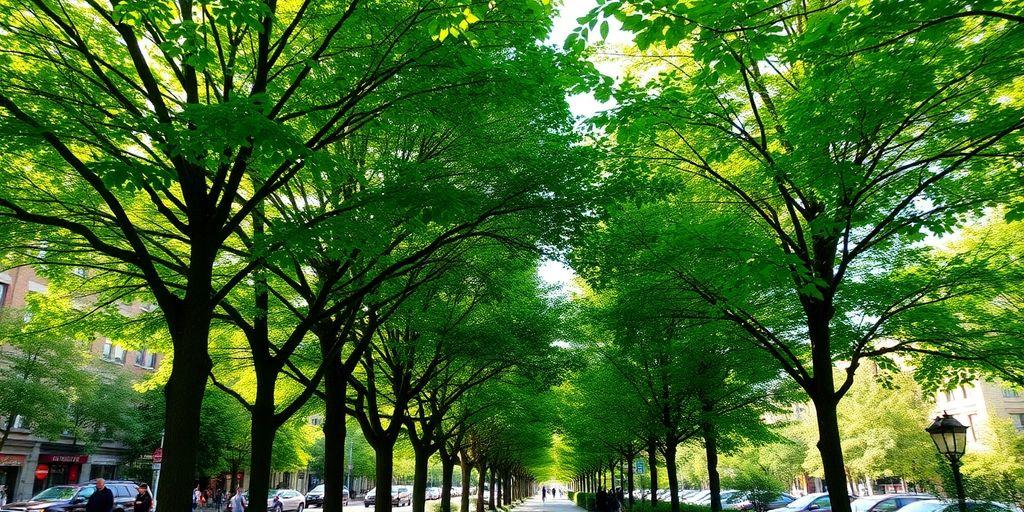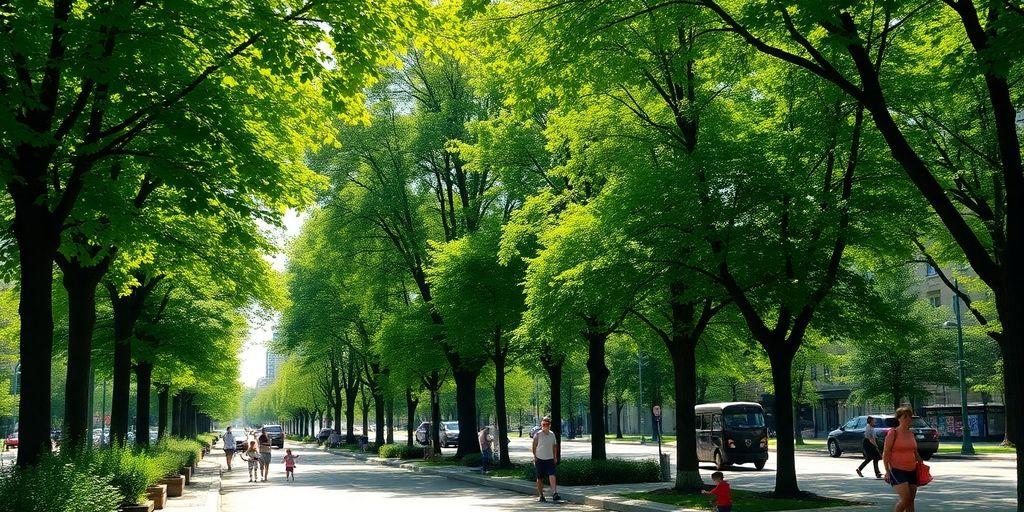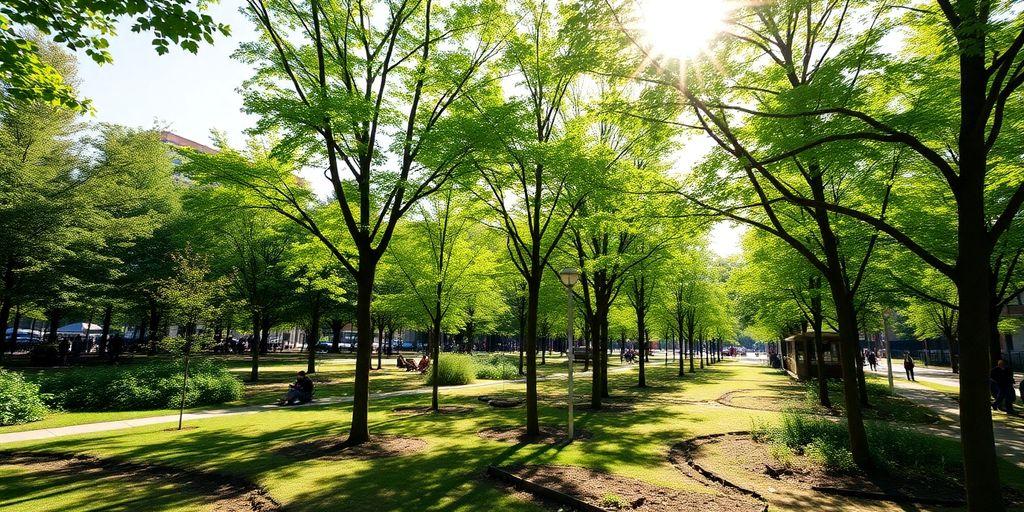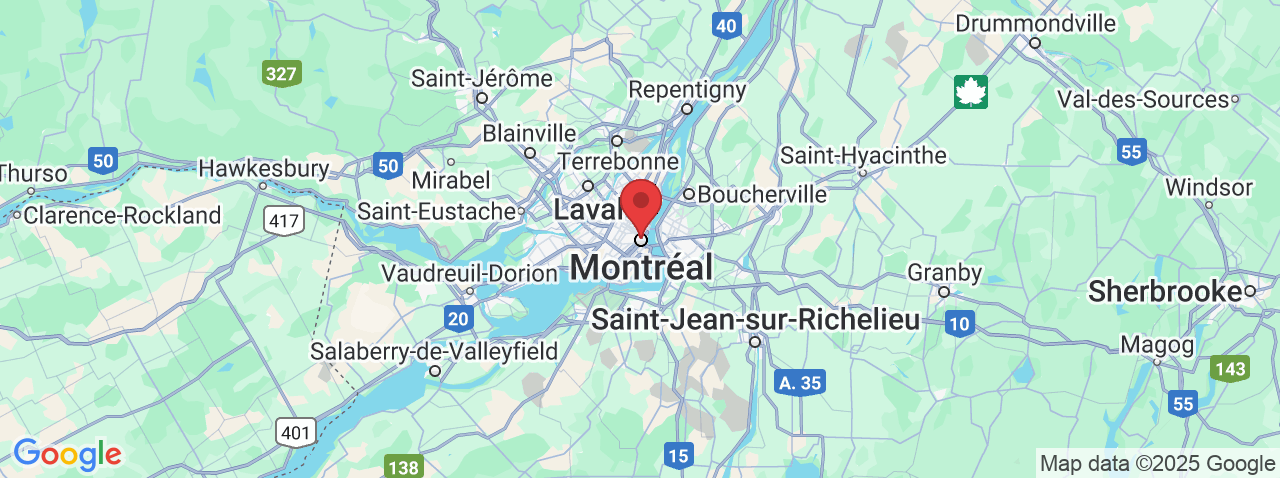Tree Service Montreal
Enhancing Urban Greenery: Top Tree Planting Service Montreal for Sustainable Communities
Explore top Tree Planting Service Montreal for sustainable urban greening and community resilience.
In Montreal, the push for more green spaces and tree planting is really taking off. With the city's commitment to plant half a million trees by 2030, there's a lot happening to make urban areas greener and more sustainable. This article dives into some of the key players and initiatives that are making a difference, from local organizations to city-wide strategies.
Key Takeaways
. Montreal is committed to planting 500,000 trees by 2030 as part of its climate plan.
. Community gardens and urban agriculture are central to Montreal's strategy for increasing green spaces.
. Local and national organizations like Tree Canada are actively involved in enhancing urban greenery through various programs.
1. Urban Greening

Urban greening is a key part of our strategy to make cities more livable and sustainable. In Montreal, this means planting trees, creating green spaces, and integrating nature into urban planning. Trees play a vital role in reducing urban heat, improving air quality, and providing shade. Montreal's commitment to planting 500,000 trees by 2030 is a significant step toward a greener future.
Benefits of Urban Greening
. Reduces heat in urban areas through shade and evapotranspiration.
. Improves air quality by absorbing pollutants.
. Enhances the aesthetic appeal of neighborhoods.
Challenges and Solutions
. Space Limitation: Finding areas to plant trees and create green spaces can be tough. Innovative solutions like vertical gardens and rooftop greenery are being explored.
. Maintenance: Once trees are planted, they need care. Community involvement is crucial for ongoing maintenance.
. Funding: Securing funds for large-scale greening projects is a constant challenge, but partnerships with local businesses and organizations can help.
Investing in urban greening is investing in our community's health and well-being. It's about creating a city where people can thrive amidst nature, not just concrete.
2. Tree Canada

Tree Canada is at the heart of our green endeavors. As the only national non-profit dedicated to planting and nurturing trees across both rural and urban landscapes, they play a pivotal role in making our cities greener. Their mission? To inspire, educate, and enable Canadians to plant and care for trees, ultimately improving lives and addressing climate change.
Since 1992, Tree Canada has been on a relentless mission to expand Canada’s tree canopy. They've done this through various programs that focus on greening communities, reforestation, and carbon offsetting.
Here’s a quick look at some of their initiatives:
. Greening Communities: This program partners with local groups to plant trees in urban areas, enhancing the green spaces that residents enjoy every day.
. Operation ReLeaf: Aimed at restoring areas affected by natural disasters, this initiative helps rebuild ecosystems and bring back biodiversity.
. National Tree Day: Celebrated annually, this day encourages Canadians to plant trees and engage in community activities centered around tree care.
Tree Canada’s impact is profound. By working with partners and volunteers, they plant millions of trees each year, fostering resilient ecosystems and healthier communities.
Their work is not just about planting trees but also about nurturing them to ensure they thrive. This holistic approach makes them a cornerstone in Canada’s efforts to combat climate change and promote sustainability. As we continue our journey towards greener cities, Tree Canada's role remains indispensable, guiding us with their expertise and passion for the environment.
3. Montreal Urban Agriculture Strategy
Montreal's Urban Agriculture Strategy is a forward-thinking plan aimed at boosting green spaces and promoting sustainable practices in the city. This strategy is not just about planting more trees or creating gardens; it’s about building a community that values and supports urban agriculture in its many forms.
One of the key elements of this strategy is its focus on community involvement. We believe that by educating and engaging citizens, we can create a more resilient and self-sufficient urban environment. Workshops on cultivation techniques, seed selection, and pest control are just a few examples of how we’re actively supporting citizen education and involvement.
Our Goals
1. Expand Cultivated Areas: By 2026, we aim to increase cultivated areas in Montreal to 160 hectares. This includes community gardens, private plots, and educational spaces.
2. Support Urban Agriculture Businesses: We’re targeting an increase from 40 to 55 urban agriculture businesses over five years.
3. Develop School Projects: We plan to initiate 50 new projects in schools, building on existing programs to teach kids about sustainable agriculture.
Challenges and Solutions
Urban agriculture in Montreal faces several challenges, including access to space and resources. However, we are committed to overcoming these through partnerships and innovative solutions. For instance, we’re working on improving public awareness and providing financial support to initiatives that align with our goals.
Urban agriculture is more than just a trend; it’s a movement towards a greener, more sustainable future for Montreal. By working together, we can transform our city into a model of urban sustainability.
Incorporating urban agriculture into our city’s framework is not just about growing plants; it’s about growing a community that thrives on cooperation and shared values. Let’s make Montreal a shining example of what urban agriculture can achieve.
4. Community Gardens
Community gardens are more than just plots of land; they're places where we come together, roll up our sleeves, and grow something real. In Montreal, these gardens have become a part of the city's fabric, with over 8,500 plots scattered across 96 locations. It's not just about planting seeds; it's about planting ideas and connections.
Benefits of Community Gardens
. Access to Fresh Produce: We get to enjoy fresh veggies right from our backyard. It's a hands-on way to ensure everyone has access to fresh, healthy food.
. Physical Activity: Gardening is not just good for the soul but also for the body. It's a subtle workout that keeps us moving and active.
. Stress Reduction: There's something therapeutic about getting your hands dirty and watching things grow. It’s a great way to unwind after a hectic day.
Community gardens are our little green sanctuaries in the urban jungle. They offer a slice of nature and a sense of belonging, right in the heart of the city.
Community Involvement
. Shared Responsibility: We all pitch in to keep the garden thriving, sharing tasks like watering, weeding, and harvesting.
. Educational Opportunities: These gardens are perfect for teaching kids and adults alike about sustainability and where our food comes from.
. Social Connections: It's a fantastic way to meet neighbors and build friendships. We chat over tomato plants and swap tips on growing the best cucumbers.
Community gardens in Montreal are more than just a trend. They’re a movement towards a greener, more connected city. By joining hands in these spaces, we're not just growing plants; we're growing community spirit.
5. Green Infrastructure Ontario

Let's talk about Green Infrastructure Ontario (GIO). It's all about making our urban spaces greener and healthier. GIO focuses on integrating natural elements into our cities to improve air quality, manage stormwater, and reduce urban heat. The idea is simple: use nature to solve urban problems.
Benefits of Green Infrastructure
. Improved Air Quality: Trees and plants naturally filter pollutants from the air.
. Stormwater Management: Green roofs and permeable pavements help absorb rainwater, reducing flooding.
. Urban Cooling: Green spaces lower temperatures in cities, making them more livable.
Implementing Green Infrastructure
1. 1Identify Potential Areas: Look for rooftops, parking lots, and unused spaces that can be transformed.
2. Engage the Community: Get local residents involved in planning and maintaining green projects.
3. Seek Funding and Support: Explore grants and partnerships to finance these initiatives.
By embracing green infrastructure, we can create cities that are not only functional but also beautiful and sustainable. It's about building a future where urban living and nature go hand in hand.
Green Infrastructure Ontario is leading the way, showing us that with a bit of creativity and commitment, we can transform our urban landscapes into thriving green spaces.
6. Eco-Stewardship Initiatives
Eco-stewardship initiatives are all about getting our hands dirty to make a cleaner, greener world. These efforts focus on preserving and improving our environment by engaging communities in sustainable practices. By participating in these initiatives, we not only contribute to environmental protection but also foster a sense of community and shared responsibility.
Key Elements of Eco-Stewardship
. Community Involvement: Bringing people together to work on local environmental projects. This could be anything from planting trees to cleaning up local parks.
. Education and Awareness: Teaching community members about the importance of sustainability and how they can make a difference.
. Resource Management: Encouraging the efficient use of resources, like water and energy, to minimize waste and reduce environmental impact.
Benefits of Eco-Stewardship Initiatives
. Environmental Impact: These initiatives help reduce pollution and conserve natural resources, making our cities healthier places to live.
. Social Connections: Working together on these projects helps build stronger ties within the community, fostering a spirit of cooperation and mutual support.
. Economic Savings: By reducing waste and conserving resources, communities can save money and allocate funds to other important areas.
Participating in eco-stewardship initiatives is more than just an environmental effort; it's a step towards building resilient and connected communities. When we work together, we create spaces that are not only sustainable but also vibrant and full of life.
7. Sustainable Food Practices
Sustainable food practices are gaining momentum as communities look for ways to eat better and care for the planet. We believe these practices are a cornerstone for building resilient communities. By focusing on local food production, we can cut down on food miles, support local farmers, and enjoy fresher produce.
Key Aspects of Sustainable Food Practices
. Community Gardens: These gardens are popping up everywhere, letting folks grow their own veggies and fruits. It's not just about the produce; it's about bringing people together and sharing knowledge.
. Farm-to-Table Initiatives: More restaurants and homes are getting their ingredients straight from local farms. This not only supports local economies but also ensures we're eating what's in season.
. Composting Programs: Turning food scraps into compost is a fantastic way to enrich the soil and reduce waste. Many communities are setting up composting stations to make this easier for everyone.
Embracing sustainable food practices isn't just a trend; it's a necessary shift towards a healthier, more connected way of living. We can all play a part in this movement by choosing local, reducing waste, and supporting community efforts.
Benefits of Sustainable Food Practices
Benefit Description
Reduced Carbon Footprint By sourcing locally, we minimize transportation emissions.
Improved Food Security Growing and sourcing locally strengthens food availability.
Enhanced Community Ties Working together in gardens or markets fosters connection.
By adopting these practices, we're not just eating better; we're nurturing our communities and the environment. Let's keep the momentum going and make sustainable food practices a staple in our lives.
8. Climate Action Groups
Climate action groups in Montreal are making waves in our community. These groups are all about tackling climate change head-on. They’re not just talking the talk; they’re out there, getting their hands dirty and making a real difference.
One of the key things these groups do is engage the community. They bring people together, whether it’s through organizing tree planting events, setting up community gardens, or hosting workshops on sustainable living. It’s all about getting people involved and showing them that they can make a difference.
Engaging the Community
. Tree Planting Events: These events are a fantastic way to get people outside and involved in greening our city. Plus, they help to increase our urban canopy.
. Community Gardens: By creating spaces where people can grow their own food, these gardens not only promote sustainability but also bring neighbors together.
. Workshops on Sustainable Living: From composting to water conservation, these workshops provide practical tips that people can use in their daily lives.
Collaborating with Local Governments
Climate action groups often work closely with local governments to push for policies that support sustainability. This collaboration can lead to initiatives like increased funding for green spaces or stricter regulations on emissions.
Education and Awareness
Raising awareness about climate change is another big focus. These groups often host educational events or create resources to inform the public about the impacts of climate change and what they can do to help.
It’s inspiring to see how these groups are driving change at a grassroots level. They remind us that even small actions can lead to big changes. By coming together, we can create a more sustainable future for Montreal.
9. Placemaking Community
Placemaking is all about turning spaces into places that people love and use. In our community, we've seen how this approach can bring folks together and make our neighborhoods stronger. It's not just about planting trees or setting up benches; it's about creating spots where people feel they belong.
Building Connections
One of the coolest things about placemaking is how it builds connections. We see neighbors chatting who might not have met otherwise. These connections are vital, especially when tough times hit. Whether it's sharing resources during a storm or just having someone to talk to, knowing your neighbors can make a big difference.
Encouraging Participation
Everyone's got a part to play in placemaking. From kids drawing on sidewalks to adults planting gardens, there's something for everyone. When people get involved, they feel a sense of pride and ownership. It’s like, "Hey, I helped make this happen!" That feeling is contagious and can lead to even more community projects.
Adapting to Change
As climate change throws new challenges our way, placemaking helps us adapt. We’re not just planting trees; we’re planning for the future. Community gardens, rain gardens, and green spaces are all part of this effort. They help manage stormwater, reduce heat, and provide food. Plus, they’re great places to hang out.
Placemaking is more than just a project; it's a way of building resilience and community spirit. By working together, we create spaces that reflect who we are and what we need.
Steps to Get Involved
1. Join a Local Group: Find a local placemaking or community group and see how you can help.
2. Attend Events: Participate in community events to meet others and share ideas.
3. Volunteer: Offer your time and skills to help with projects. Every bit counts!
By being part of the placemaking movement, we’re not just improving our surroundings; we're building a community that cares for each other and the planet. Placemaking isn't just about places; it's about people
10. Urban Canopy Cover
Urban canopy cover is like nature's umbrella for our cities. It provides shade, reduces heat, and even helps clean the air. In Montreal, we're seeing a push to increase this canopy cover, and it's about time.
"Increasing the urban canopy isn't just about planting more trees; it's about creating a healthier, more sustainable environment for everyone."
Here's why urban canopy cover matters:
. Temperature Control: Trees can cool down city streets. They can lower temperatures by providing shade and releasing moisture into the air.
. Air Quality: Trees are natural air filters. They absorb pollutants and release oxygen, making our air cleaner.
. Biodiversity: A diverse range of trees supports different wildlife, fostering a balanced ecosystem.
Steps to Boost Urban Canopy
1. Identify Areas with Low Canopy: Use satellite imagery or local surveys to find areas lacking trees.
2. Choose the Right Trees: Not all trees are suited for urban environments. Select species that thrive in city conditions.
3. Community Involvement: Get locals involved in tree planting events. It builds community spirit and ensures trees are cared for.
In conclusion, boosting our urban canopy is more than just an environmental effort; it's a community project that brings people together and makes our cities better places to live.
